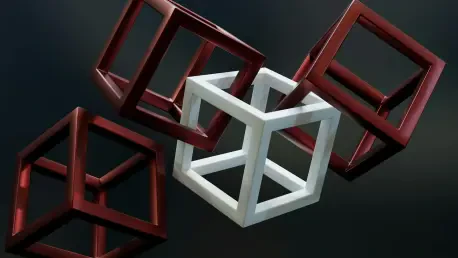In the ever-evolving world of digital art and technology, advancements in 3D design play a crucial role in shaping innovative visual experiences. One of the forefront players in this domain is the Render Network, known for its prowess in rendering complex designs with efficiency and precision. This review delves into the key features, performance, and real-world applications of 3D design on the Render Network, focusing on the work of Brooklyn-based creative director Wes Cockx. Recognized for his pioneering designs involving Redshift on Render Network, Cockx stands out with his unique blend of geometric and abstract realism, creating a seamless interaction between the digital and physical worlds.
Analyzing the Render Network’s Core Features
The Render Network is founded on core principles that revolutionize the 3D design landscape, enabling creators to achieve unprecedented levels of realism and detail. At its heart, the network implements advanced rendering capabilities, facilitating real-time realism and photorealistic outputs. This technological edge has significantly improved the quality and performance of digital art production, setting a new benchmark for what can be achieved within the realm of 3D design.
Alongside rendering capabilities, the Render Network excels in integrating seamlessly with a variety of digital art tools. Its compatibility with established 3D design software ensures smooth workflows and enhances performance metrics. Feedback from users frequently highlights the ease of integration and the palpable boost in productivity, demonstrating the network’s ability to adapt and improve existing creative processes.
Innovations and Trends in 3D Design
Recent years have witnessed a remarkable surge in innovations within the 3D design arena, with the Render Network at the helm of this transformative journey. Revolutionary tools and methodologies continue to emerge, propelling the industry forward through innovative techniques and shifting trends. Motion projects, in particular, have benefited immensely, with notable contributions from artists like Wes Cockx, whose iterative research methods set new standards in creative design systems. His collaborative efforts further underscore the network’s impact on the broader digital arts sector.
These innovations pave the way for emerging trends that shape future trajectories of 3D design, influencing industries and encouraging cross-disciplinary collaborations. The continuous evolution of such tools emphasizes the importance of staying abreast of technological advancements to maintain a competitive edge in the digital marketplace.
Exploring Real-World Applications
The versatility of 3D design via Render Network is evident in its widespread adoption across diverse industries, from gaming and film to virtual reality. Notable implementations, such as Cockx’s work with global technology giants like Microsoft and Google, highlight the practical utility and impressive outcomes of deploying 3D design in real-world scenarios. These projects serve as exemplars of how Render Network’s capabilities can elevate creative endeavors, resulting in impactful visual and auditory experiences.
The network’s role in enhancing the production quality of various sectors is further testament to its adaptability and the profound influence of 3D design on modern technological landscapes. Such success stories emphasize the vital role the network plays in advancing digital art across different contexts.
Navigating Challenges and Limitations
Despite its achievements, the field of 3D design on Render Network is not without challenges. Technical hurdles related to scalability, regulatory compliance, and market dynamics present ongoing obstacles to be navigated. Addressing these limitations requires innovative solutions and cross-industry collaboration, as stakeholders work toward broader acceptance and deployment of cutting-edge technologies.
Efforts to overcome these challenges involve fostering sustainable practices, adapting to regulatory changes, and staying responsive to market demands. These strategies are crucial for accelerating the widespread adoption of 3D design technologies, ensuring they remain at the forefront of the digital art ecosystem.
Future Prospects and Developments
Looking ahead, the potential for future advancements in 3D design on Render Network appears promising. Anticipated breakthroughs, such as the integration of new technologies like Houdini’s Copernicus network, are expected to push the envelope of 3D animation techniques. Artists like Wes Cockx aim to expand their studios, incorporating these advancements while balancing personal artistic growth with industry collaborations.
The pursuit of innovation in this field is set to reshape the landscape of digital design and production, offering a glimpse into a future where 3D design continues to play an integral role in various creative domains. Prospective developments carry the promise of unlocking new creative horizons, driving the industry toward uncharted territories.
Summarizing the Dynamics of 3D Design on Render Network
Throughout this review, it becomes evident that 3D design on Render Network has evolved into a key player within the digital art and technology sector. By blending advanced rendering techniques with seamless software integration, the network improves the quality and efficiency of visual productions. Artists like Wes Cockx exemplify the network’s impact, contributing groundbreaking insights and methodologies to the industry. As it continues to innovate and adapt to industry trends, the Render Network holds the potential to lead future advancements in 3D design, shaping the digital art landscape for years to come.









